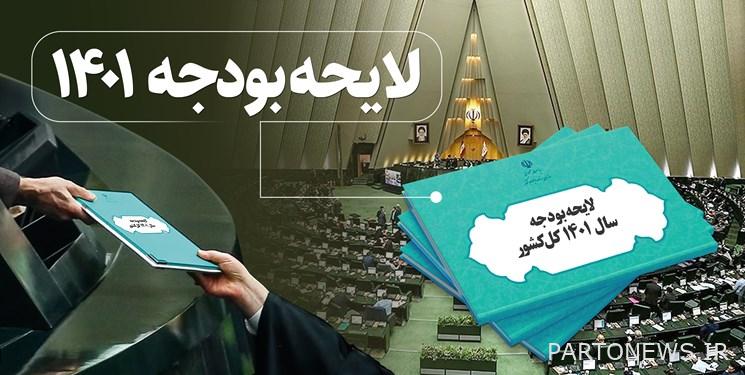Return halfway to petrochemical fuel price reform in budget bill / Why petrochemical rents were maintained

According to Fars News Agency’s economic correspondent, in the initial text of the 1401 budget bill, the 13th government decided to increase the gas fuel rate of petrochemicals from 30% in 1400 to 100% of the average gas feed rate delivered to petrochemical companies in order to implement the law on targeted subsidies. The future will increase.
The government’s move was significant in several ways:
- Increase of government revenues in the absence of budget resources: According to calculations, the revenue from the reform of petrochemical gas fuel rates equal to the gas feed rate is estimated at about 30,000 billion tomans.
- Leading petrochemical companies to improve efficiency and optimization: Obviously, as long as the price of gas fuel for these units is cheap, petrochemical companies will have no incentive to increase productivity.
- Adjusting the astronomical profit margin of petrochemicals: According to the statistics of petrochemical units in Iran, especially gas feed petrochemicals have high profit margins compared to petrochemicals in other countries, this profit margin is due to the price rent of food and fuel and their tax exemption.
Figure 1 is the proposal of the 13th government in the initial text of the 1401 budget bill, according to which the gas fuel rate of petrochemical units will be equal to their gas feed rate.
Figure 1
* Rent setting a ceiling in Rials for the price of petrochemical gas feed
But this forward-looking proposal to reform the fuel prices of petrochemicals, especially gas-feed petrochemicals, did not last long, after which the government returned all the special privileges of the country’s lucrative petrochemicals to them in several stages.
Seyed Ehsan Khandouzi, Minister of Economic Affairs and Finance, in a detailed interview on December 19th, explained the 10 approvals of the government’s economic headquarters to support the capital market and said: Next year, the petrochemical gas feed price ceiling will be 5,000 Tomans per cubic meter, ie the export rate. .
Thus, by creating a rial ceiling on the cost of feed prices and consequently the cost of petrochemical fuel, the government virtually prevented their costs from rising if the exchange rate or the world price of oil and petrochemical products increases next year, while in the event of these events revenues They also increased in currency and there was no reason to limit the cost of these units.
* Continuation of tax exemption for methanol and urea petrochemicals
Then, with another setback in its new resolution under Note 6 of Budget Law 1400, the government emphasized the continuation of the tax exemption for export revenues of some gas feed petrochemical products.
Although the compilation of a list of crude and semi-crude petroleum products and their eligibility for taxation is a step forward, But it is still unclear why some semi-raw products, such as methanol and urea, whose petrochemicals also have very high profit margins, are exempt from export income tax.
On January 22, Mohammad Mokhber, the first vice president, announced the Cabinet’s decision on the list of crude and semi-crude oil, gas and petrochemical materials whose export revenues are subject to tax. Figure 2 shows the list of semi-raw materials for oil, gas and petrochemicals, but does not mention “methanol” and “urea” as semi-raw materials in the list of the government board for taxation on their export revenues.

Figure 2
* Amendment of the budget bill to reduce gas fuel rates for petrochemicals
But the 13th government took the last step to completely reverse the original text of the budget bill on Sunday, January 17th. On this date, a cabinet meeting chaired by Seyed Ibrahim Raisi was held, which approved the price of gas fuel for petrochemicals, refineries and downstream industries, steel recovery complexes and utility costs including electricity, water, oxygen, etc. equal to 40% of the feed price. Determine petrochemical gas.
Thus, in the new amendment to the budget bill, the price of gas fuel for petrochemical companies was reduced from 100% to 40% of the feed rate. Also, creating a price ceiling in Rials for the price of petrochemical gas feed and continuing the tax exemption of some gas feed petrochemicals are other benefits donated by the government to these lucrative units.
* What is the argument for regression against petrochemicals’ concessions?
Now, the main question is what is the motive and purpose of the government withdrawing from its initial proposal and contenting itself with a 10% increase in the price of petrochemical gas fuel in the 1401 budget bill compared to the 1400 law? (In the budget law of 1400, the gas fuel rate of petrochemicals was set equal to 30% of the feed rate).
So far, two arguments have been put forward to justify the government’s actions, which are: 1- The effect of rising petrochemical fuel prices on the value of their shares in the capital market 2- Negative profit margins of a number of liquid feed petrochemicals.
But even these two arguments do not seem convincing for such a large rent to petrochemicals, because the government could have considered different scenarios and solutions to solve these two issues without affecting the step forward in price reform.
* Proposing segregation of petrochemical fuel pricing based on the type of feed in the budget bill
In general, petrochemicals are divided into two categories according to the type of feed: “gas feed petrochemicals” and “liquid feed petrochemicals”. Government price rents on gas feed to gas petrochemicals and the relatively high price of liquid feed have led to much higher profit margins for gas feed petrochemicals than for liquid feed.
The Center for the Study of Value Chain of the Oil and Gas Industry, as a scientific and specialized reference in the country, in a report entitled “Finding the root of the attractiveness of gas feed in the petrochemical industry” has revealed the astronomical profits of petrochemicals (Figure 3).
According to the report, the average profit margin of gas feed petrochemicals is about 50% and the profit margin of liquid feed petrochemicals is about 20%. Also, as shown in Figure 3, a handful of liquid feed petrochemicals have low profit margins for a variety of reasons.

Figure 3
Now a question arises from the second argument of governments, is it reasonable to grant a significant reduction in the price of gas fuel to all petrochemical units, even methanolizers and urea producers, which have high profit margins, due to the profit margins of several liquid feed petrochemicals?
If the government’s concern is focused on the low profit margins of a number of liquid feed petrochemicals, would it not be better if the gas pricing formula for petrochemicals remained in the budget at 100% of the feed rate and only liquid feed petrochemicals were given a price discount in 1401?
As a result, the second argument of the government in backwardness in price reform does not seem very logical, because by separating the price of fuel for gas feed petrochemicals and liquid feed, this concern could be solved without double rent going to the petrochemical petrochemicals.
* The government ignores the proposal of the Parliamentary Research Center to gradually reform fuel prices
However, regarding the impact of rising petrochemical fuel prices on the value of their shares in the capital market, the Parliamentary Research Center, in a report examining this issue, has presented three scenarios for correcting the petrochemical gas fuel prices.
Scenario 1 deals with the government’s initial proposal in the 1401 budget bill. Scenario 2 illustrates a situation in which the fuel and gas feed rate next year will be equal to 85% of the rate obtained from the natural gas feed pricing formula of petrochemicals.
Scenario 3 shows the situation that with the aim of gradually increasing the gas fuel rate and reaching the gas feed rate of the petrochemical industry during three years, in 1401, the gas fuel rate reached 60% of the petrochemical gas feed rate and in the next two years 20% each year. Add to 60% to reach the petrochemical gas feed rate.
Figure 4 shows the effect of the gas fuel increase policy on the average profit margin of gas and liquid feed petrochemical complexes.

Figure 4
Finally, the Parliamentary Research Center, considering the government’s considerations of the capital market, proposes that the government take a step forward to reduce subsidies by gradually reforming the price of petrochemical gas fuel to 60 percent of the gas feed rate and an annual 20 percent increase from 1401 onwards, according to the third scenario. Remove the secret of these units and observe the capital market considerations. The second scenario has also been proposed to the government with consideration.
But as the recent cabinet decision shows, the government has even backed down from the minimal proposal of the Parliamentary Research Center. All this is while there is speculation that the heavy pressure of the petrochemical owners in the country on the 13th government has caused such setbacks.
In general, it seems that the review of fuel price reform of petrochemical units is one of the issues that need to be decided more carefully by the Joint Commission of the Islamic Consultative Assembly.
End of message /
.

